Each of the 50 states, the District of Columbia, Office of Overseas Schools, and the U.S. Department of Defense Education Activity will select one assistant principal to represent their state. State winners are selected from applications submitted to the state associations.
Because each state’s selection process varies, please contact your state association for more information on their selection process.
2018 State Assistant Principals of the Year
| State | Name | School Name |
|---|---|---|
| Alabama | Jennifer Hogan | Hoover High School |
| Alaska | Petra Timmons | Ryan Middle School |
| Arkansas | Brad Ray | Northside High School |
| California | Mistee Guzman | East Avenue Middle School |
| Colorado | Andrea Smith | Niwot High School |
| Connecticut | Joseph Masi | Northwestern Regional High School |
| Delaware | Colleen Conaty | Howard High School of Technology |
| Florida | Eric Basilo | Sanford Middle School |
| Georgia | Tammy Jacobs | South Effingham High School |
| Hawaii | Sonja Samsonas | Robert Louis Stevenson Middle School |
| Idaho | Heath McInerney | Mountain View High School |
| Illinois | Timothy Chipman | Jacksonville High School |
| Indiana | Jennifer Perkins | Mooresville High School |
| Iowa | Brian Howes | Dubuque Senior High School |
| Louisiana | Alyce Callahan | Sixth Ward Middle School |
| Maine | Jayme Jones | Greely High School |
| Maryland | Debra O’Byrne | Glenwood Middle School |
| Massachusetts | Lauren Carreiro | Ashland High School |
| Michigan | Roger Gurganus | Brownstown Middle School |
| Minnesota | Jason Bakke | Century Middle School |
| Mississippi | Mary Edwards | Madison Central High School |
| Missouri | Theresa Wilson | Carl Junction High School |
| Montana | Erica Schnee | Bozeman High School |
| Nebraska | Jill Johnson | Seward High School |
| Nevada | Cynthia Waddell | Sparks High School |
| New Jersey | Tara Oliveira | Governor Livingston High School |
| New Mexico | Betty Scheppmann | Lincoln Middle School |
| New York | Theresa Adamec | Lancaster High School |
| North Carolina | Meghan LeFevers | Bessemer City High School |
| North Dakota | Kelly Peters | Red River High School |
| Ohio | Ned Lauver | Westlake High School |
| Oklahoma | Stephanie Williams | Norman North High School |
| Oregon | Rich Engel | West Albany High School |
| Pennsylvania | Kristopher Brown | Strath Haven High School |
| Rhode Island | John Fontaine | Cranston High School West |
| South Carolina | Erica Page | Pelion High School |
| South Dakota | Brad McDonald | Tri-Valley High School |
| Tennessee | Traci Sparkman | Walter J. Baird Middle School |
| Texas | Rebecca Odajima | Midway High School |
| Utah | Sandra LeCheminant | Albion Middle School |
| Vermont | Jay Hartman | Missisquoi Valley Union Middle/High School |
| Washington | Tami Skillingstad | Westwood Middle School |
| West Virginia | Melanie White | Sissonville High School |
| Wisconsin | Justin Szews | Lakeland Union High School |
Alabama
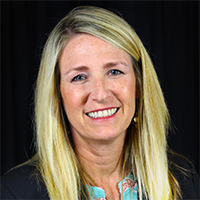
Jennifer Hogan
Hoover High School
Hoover, AL
Grades: 9–12
Students: 2,884
Region: Suburban
Hoover High School has almost 3,000 students. It takes positive relationships to maintain a positive and personalized environment in our large school. One of my mantras is that every student should have at least one go-to adult in the school. In one beginning-of-the-year activity, I created large posters that contained all of the returning 10th–12th grade students’ pictures and names. I hung these in the conference room and teachers identified students with whom they had a positive relationship. Any students who were not identified were placed on a spreadsheet that was sent to teachers. Teachers were asked to review their rosters for the year and “adopt” a student for the year. We want all students to have a sense of belonging and know that they are cared for, and this activity helped our staff ensure that all students had an advocate.
Alaska
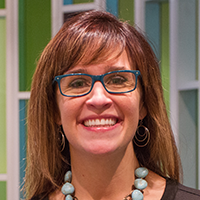
Petra Timmons
Ryan Middle School
Fairbanks, AK
Grades: 7–8
Students: 374
Region: Urban
Ryan Middle School (RMS) has a strong culture of staff collaboration and using data to make decisions. The RMS staff is experienced and diverse in their content knowledge, effective teaching strategies, and investment in working with young adolescents. Student achievement is at the center of everything we do. As a staff, we collaborate with each other to identify what works best to personalize learning for each student. As a school, we embrace the diversity of our students and community and they know that we are here to educate and care for them. I work diligently to support and maintain our school culture and commitment to our students and each other through professional development and staff relationships. When we have a culture of trust, we accomplish amazing things.
Arkansas
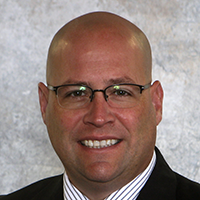
Brad Ray
Northside High School
Fort Smith, AR
Grades: 10–12
Students: 1,750
Region: Urban
Success for students can come in many different forms. Over the last 20 years, I have been part of many successful endeavors involving my students. Former students of mine have gone on to the military service academies, and some are doctors, lawyers, teachers, and principals. One was the personal pilot for a former presidential candidate and another was a professional athlete. Many of my former students have stayed in touch with me through social media. They refer to the structure and guidance they received in their high school years as a foundation for their own personal success. I believe developing personal and lasting relationships with our students is the pathway to educating our youth and setting them up for success in our society.
California
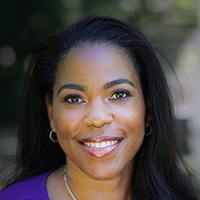
Mistee Guzman
East Avenue Middle School
Livermore, CA
Grades: 6–8
Students: 645
Region: Suburban
Students can be successful when the adults in their lives come together and work as a team to prepare them for the challenges ahead. I am extremely skilled at mobilizing resources in support of student social-emotional and academic growth. All students come in with a unique set of gifts, challenges, and needs. They inspire me to gather teams who put the needs of the child first. For example, we had a special education student who had a number of very serious behavior challenges at his previous school. The special education team created a plan that accommodated his needs. His mother expressed her gratitude for one of the best years her child ever had at school. It took a team to highlight his path to success.
Colorado
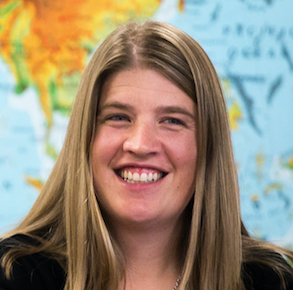
Andrea Smith
Niwot High School
Niwot, CO
Grades: 9–12
Students: 1,227
Region: Suburban
Teachers engage in professional development when they have a choice and voice in their learning. I am proud of the work we have done at Niwot High School (NHS) to leverage our teacher expertise to build choice-driven and student-centered professional development programming. My best success at NHS has been to build a format for professional development that supports teacher collaboration and engagement. By empowering teachers to share their craft, we have been able to create professional learning networks within our school. We have then used teacher feedback and student achievement data to develop teacher-led action teams to connect our work in professional development to the school’s vision and building goals. We still have work to do to continue to improve, but having a professional development structure that supports teacher growth and school improvement is a strong foundation to continue to advance learning.
Connecticut
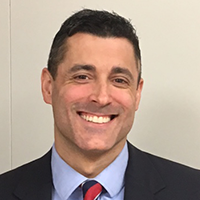
Joseph Masi
Northwestern Regional High School
Winsted, CT
Grades: 9–12
Students: 741
Region: Rural
The success story of Northwestern Regional High School comes from the relationships we value, the collaborative nature we have established, our appreciation for the whole student, and understanding the impact the social and emotional component of students’ lives has on their ability to be successful in school. We are not a school that is charged with identifying and discarding talent, but a school that is tasked with developing talent by meeting students where they are and providing different levels of support depending on their circumstances. Recent evidence confirms our school’s success. Our latest accountability index at the state level was 92.3 percent, our chronic absentee rate was 3.3 percent, and our graduation rate for the Class of 2017 was 100 percent.
Delaware
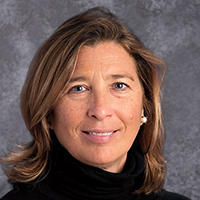
Colleen Conaty
Howard High School of Technology
Wilmington, DE
Grades: 9–12
Students: 862
Region: Urban
When we took over, our team was faced with managing transformational change in all areas of operation. Challenging expectations for student capacity was the critical first step toward improvement. One by one, the 13 career areas I supervised became accountable by measurable data based on End-of-Pathway credentialing. Excuses were eliminated as a “whatever it takes” mindset was put into action, turning lackluster expectations into the goal of every student earning industry-recognized credentials prior to graduation. To close the achievement gap and provide digital equity, the first 1:1 iPad initiative in public education statewide was successfully implemented, with Howard High School twice being recognized as an Apple Distinguished School.
Florida
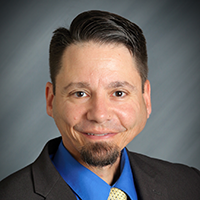
Eric Basilo
Sanford Middle School
Sanford, FL
Grades: 6–8
Students: 1,575
Region: Urban
As a teacher and assistant principal, I often place a majority of my focus on students who are struggling or are facing challenges. What I have realized is that sometimes, those challenges include not being exposed to your fullest potential. For this reason, I have spent the last three years focusing on helping African American, Hispanic, and economically disadvantaged students succeed in advanced courses. Initially, less than 100 students from these populations enrolled
in one or more advanced courses. Thanks to educating families on the advantages of going beyond standard-level courses, educating teachers on the extra assistance students would need along with different challenges they face, and the inclusion of mentoring, more than 200 students enrolled. Most important, an average of 84 percent of the students earned an A or B in these courses.
Georgia
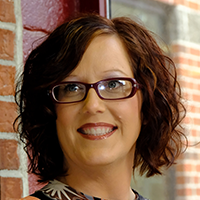
Tammy Jacobs
South Effingham High School
Guyton, GA
Grades: 9–12
Students: 1,664
Region: Suburban
When I looked at data from fall 2012 to fall 2016, I noticed that not only was our enrollment growing, but so was the percentage of students failing two or more courses per year. I formed an instructional focus team of six teachers who worked with me to develop a program that would provide intense remediation for at-risk students along with tutorial opportunities for those students needing extra help from time to time. Our team designed an instructional focus with
three concentrations: a regular tutorial to get help and make up work; a mandatory tutorial for students failing or struggling within Georgia Milestones courses; and a mandatory unit repair for all ninth-grade courses. This was the first year of the instructional focus program and I have already noticed fewer zeros in grade books as well as a reduced number of failing grades during the first semester.
Hawaii
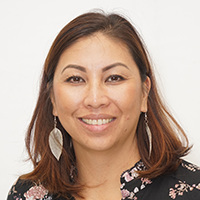
Sonja Samsonas
R.L. Stevenson Middle School
Honolulu, HI
Grades: 6–8
Students: 651
Region: Urban
I invest much of my time in working on supports for students, which have resulted in an intentional and strategic collaboration that has decreased R.L. Stevenson Middle School’s achievement gap rate by 5 percent. My work has decreased behavior referrals by 75 percent during my tenure and my push to maintain both a Positive Behavioral Interventions and Support as well as a Response to Intervention model at Stevenson has led to teacher leaders embracing collaborative leadership. My persistence has also led to the creation of a reputable after-school program and 16 after-school activities for middle school students to participate in at no cost.
Idaho
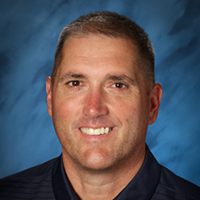
Heath McInerney
Mountain View High School
Meridian, ID
Grades: 9–12
Students: 2,300
Region: Suburban
Building relationships and making connections with students is the key to performance growth. Before learning can take place at school, students must feel valued and welcome in the school environment. They should make connections with adults and feel confident, safe, and comfortable belonging to the school culture. If these relationships can be built, then students will be able to take ownership in their learning and grow emotionally and intellectually. This has been my passion and belief as an educator and something I strive to provide for my students every day and with every interaction. I pride myself on the fact that I know my students, their interests, goals, and future dreams. I can guide them toward finding personalization within a large high school and better serve them toward finding success.
Illinois
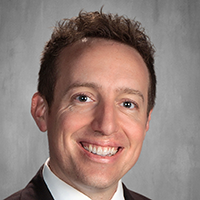
Timothy Chipman
Jacksonville High School
Jacksonville, IL
Grades: 9–12
Students: 1,026
Region: Urban
I believe—and my professional practice indicates—that there is no meaningful, long-lasting learning in an environment that does not function as a community. In the spirit of collaborative leadership, one of my priorities in the past two years has successfully merged the elements of community, culture, and academic content. Our development of a family support group, Crimson Community Connection, has provided a monthly forum for us to not only share relevant school
information, but more importantly, listen to our parents and community stakeholders.
Indiana
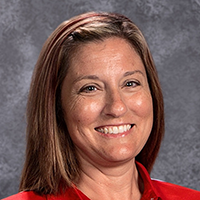
Jennifer Perkins
Mooresville High School
Mooresville, IN
Grades: 9–12
Students: 1,350
Region: Suburban
I used collaborative leadership to improve a falling graduation rate at Mooresville High School (MHS). I created senior period for students that were falling behind in classes and were in jeopardy of not graduating. Senior teachers provided after-school support and allowed students to complete missing assignments in senior period. Parents were notified weekly that their student was in jeopardy of not graduating and that free tutoring was available to them after school. I
conduct biweekly meetings with seniors to check in on their progress and make sure that they were taking advantage of senior period. Through a collaborative effort involving teachers, staff, students, and the community, the graduation rate at MHS improved to 97 percent.
Iowa
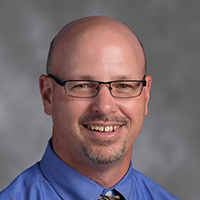
Brian Howes
Dubuque Senior High School
Dubuque, IA
Grades: 9–12
Students: 1,598
Region: Urban
Many times, leadership from assistant principals focuses heavily toward managerial and organizational leadership. Collaborative leadership is critical to move beyond these areas and foster innovation. An excellent example is found in our school’s collaborative approach to developing a focus on Response to Intervention (RTI). We have a team of administrators and teacher leaders who engaged in professional learning centered on RTI. Our team uses this professional learning to collaborate with staff, students, and parents on a plan moving our school forward with providing interventions that will help ensure all students learn at a high level. The collaboration led us to a revised schedule that sets aside time to give students needed supports. Even more important, it is leading to changes in mindset amongst staff that positively influence our student achievement.
Louisiana
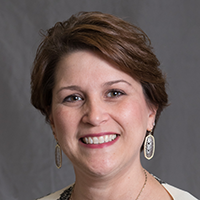
Alyce Callahan
Sixth Ward Middle School
Thibodaux, LA
Grades: 6–8
Students: 246
Region: Rural
I am fortunate to work at a school that has very few discipline problems. Because of this, I am able to focus on classroom instruction, assessments, and professional development. As a strong instructional leader, I stress the importance of literacy in instruction. To the best of my ability, I have centered our vision around the idea that students who can read, write, and speak about the most important content in their subjects have the best chance of being college and career ready. I have worked diligently to implement and organize our RITE (Reteaching, Intervening, Tutoring,
Enriching) classes over the past four years. RITE provides the time our teachers need to emphasize literacy across curricula, to be consistent, and to be supportive.
Maine
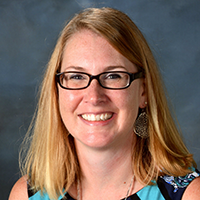
Jayme Jones
Greely High School
Cumberland, ME
Grades: 9–12
Students: 643
Region: Suburban
I have worked hard to implement a multiple pathways program to ensure students’ interests are expanded and taken into account when determining graduation requirements. With this new program, we are able to align student interests with our school standards to determine credit. Not only has this helped to build the climate around student voice and choice, but it has also helped to build a collaborative climate between our teaching staff and the student body. This program
has allowed students to access their education in a way that is more meaningful to them, which results in greater engagement and success. With the implementation of these cohesive tiered supports for students, we have decreased failures by 50 percent and have seen an increase in proficiency with our state testing in almost all subgroups.
Maryland
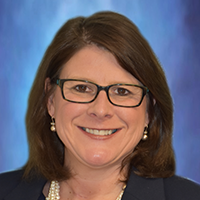
Debra O’Byrne
Glenwood Middle School
Glenwood, MD
Grades: 6–8
Students: 517
Region: Suburban
As a leader, collaboration is essential to maintaining growth and instructional improvement. Two years ago, under my leadership, Glenwood Middle School embarked on a journey to implement restorative practices, specifically community and instructional circles. Collaborating with key individuals in this professional development endeavor not only ensured that strategies were followed, but that mindsets would shift. Restorative practices allow the entire school community to make valued contributions and foster relationships, which ultimately bolster academic achievement. The collaborative leadership team has been successful in encouraging the individualization of student thinking and learning, which, in turn, has allowed academics to flourish. Collaboration enhanced voice, which led to choices in learning, and that is a success!
Massachusetts
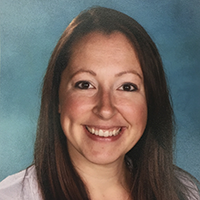
Lauren Carreiro
Ashland High School
Ashland, MA
Grades: 9–12
Students: 744
Region: Suburban
For three years, I was a part of the School Start Time Committee, which was committed to reviewing the research on school start times and how to best support students in this way. As part of the committee, we reviewed and discussed scientific research on how a later school start time supports adolescent development and how this would look in our district. We then hosted several community events to have open conversations with stakeholders. At the end of a three-year
process and in collaboration with several town leaders, we created a time schedule for each school and worked through the logistics with the school committee. In our first year with a new bell schedule, we are examining effects on mental health, academics, and student well-being.
Michigan
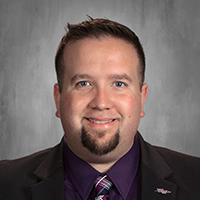
Roger Gurganus
Brownstown Middle School
Brownstown, MI
Grades: 6–7
Students: 777
Region: Suburban
When starting as assistant principal, I knew there was a huge desire from our students to connect with their teachers and their school. After the final bell, the hallways of our school were vacant and silent. I knew we had to change the culture of our school, and I began that process by starting and running after-school clubs. Within six months, teachers had seen changes in student behavior and motivation in their classes. They began to see that when students connect, they
grow. A teacher joined me in my club, The Spirit Squad, and soon thereafter more joined. Teachers began to create free after-school clubs and now, we have 17 clubs that give the opportunity for students to connect and grow. Our culture is forever changed!
Minnesota
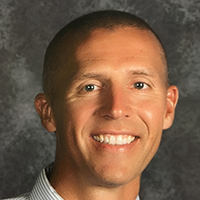
Jason Bakke
Century Middle School
Lakeville, MN
Grades: 6–8
Students: 951
Region: Suburban
For the past 13 years, I have been part of many dynamic changes that have positively impacted school climate and student achievement. I work together with staff on two critical initiatives, WIN (What I Need) and a strong model for PLCs. WIN is a Response to Intervention approach our school implemented to ensure success for every child. We continue to place an emphasis on our PLC time, knowing that a data-driven, collaborative approach by staff is paramount for student achievement. Several students and parents also noted the creation of the Panther Prep program, which supplements classroom instruction each month, as a model of innovation and inspiration.
Mississippi
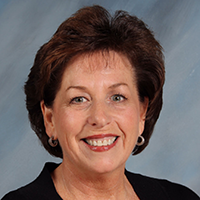
Mary Edwards
Madison Central High School
Madison, MS
Grades: 10–12
Students: 1,287
Region: Suburban
Through the Individualized Education Program process, we identified that one of our students wanted to become a licensed practical nurse (LPN). We planned for the student to graduate and then continue with school through the Job Corps program. During her senior year, the student’s mother lost her job and they were forced to move to a shelter. Late one afternoon, the student contacted me to say that she could not continue to come to school because her mother’s car
was in disrepair. With school board approval, I was allowed to transport the student to and from school, which allowed her to finish. With the assistance of our special education department, we enrolled the student in the Job Corps program. Today, she is enrolled at a community college and well on her way to becoming an LPN.
Missouri
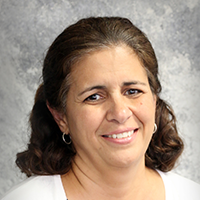
Theresa Wilson
Carl Junction High School
Carl Junction, MO
Grades: 9–12
Students: 980
Region: Suburban
My position as assistant principal affords me the opportunity to develop relationships with the students who most need the support of caring adults at school—the disengaged who are at risk of dropping out, and those who feel marginalized, victimized, or excluded. From my first contact with a student, I am intentional about earning trust. I listen more than I speak and can therefore connect students with the most appropriate resources available in our district. My actions
directly benefit students daily. As I model servant leadership and follow up with classroom teachers regarding the “why” behind student behaviors, teachers also become more sensitive to individual student needs and are more likely to personalize learning in their classrooms.
Montana
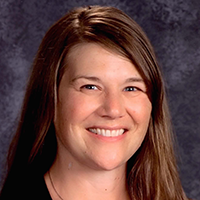
Erica Schnee
Bozeman High School
Bozeman, MT
Grades: 9–12
Students: 2,170
Region: Suburban
Two of my core values are nurturing relationships and cultivating community. My focus on collaborative leadership provided the opportunity to successfully overhaul the master schedule process at Bozeman High School. While this task proved daunting, we created a culture focused on open communication and collaboration. As a result, teachers understood that the changes were in the best interest of students. Therefore, we were able to work together as a building
and implement a new scheduling process. Students were better informed about the scheduling process, were able to take classes they preferred, and there were fewer study halls or free periods in the middle of their schedules. These changes resulted in fewer discipline problems, which led to enhanced student engagement and achievement.
Nebraska
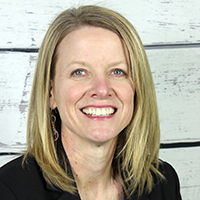
Jill Johnson
Seward High School
Seward, NE
Grades: 9–12
Students: 510
Region: Suburban
As part of the school improvement process, our Positive Culture Action Team sought stakeholder input, conducted research, designed a matrix, and created our very own personalized program for inspiring the behaviors we wanted students to replicate. PRIDE, which stands for preparation, respect, integrity, dedication, and effort, acknowledged these desired behaviors complete with celebratory recognition rallies. To achieve success, we addressed the issue of school culture first, and the resulting data tells a story of improved student-staff relationships, increased engagement, and significantly higher enrollment in rigorous courses for learners at all levels.
Nevada
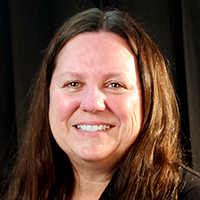
Cynthia Waddell
Sparks High School
Reno, NV
Grades: 9–12
Students: 1,193
Region: Urban
Four years ago at Sparks High School, special education and English language (EL) teachers had little ownership of the classes they taught. I believed our teachers could do more together, so I began cultivating an inclusive program. Since then, we have overcome numerous obstacles. Now, special education teachers, EL teachers, and regular education teachers collaborate in a way that fosters meaningful growth and makes a difference for all students. In all subjects, we have seen continued growth in credit attainment. For example, co-teaching 10 sections of geometry led to an overall geometry credit attainment growth of 6 percent. Credit attainment for students with Individualized Education Programs grew 27 percent and for EL students, the figure grew 5 percent.
New Jersey
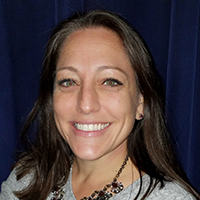
Tara Oliveira
Governor Livingston High School
Berkeley Heights, NJ
Grades: 9–12
Students: 1,023
Region: Suburban
I believe in leading as a team, having a shared vision and goals, and learning from each other in order to effect change. As a result, when my school became a Google school, I embraced the implementation and immediately began to develop ways that the collaborative nature of this system could positively affect our school community. One development was a folder called GL Admin Memo, which contains a series of 30 subfolders, each with detailed information pertaining to some aspect of teaching, learning, and facilities. This primary means of communicating with staff is always accurate and up to date, and as a result, collaboration is more effective than ever before. Due to its success, I have worked with other district administrators to streamline their school’s communication.
New Mexico
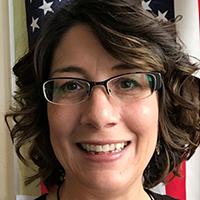
Betty Scheppmann
Lincoln Middle School
Rio Rancho, NM
Grades: 6–8
Students: 999
Region: Suburban
Working with students across all contents and abilities at Lincoln Middle School is most rewarding for me. When it comes to assisting students academically, one student comes to mind. This student struggled on a daily basis to just get to school and be organized enough to get from class to class. Meeting with this individual two to three times a week over a semester helped the student have a place to share feelings of stress and doubt. Working with the student to stay organized took a lot of work. The student slowly started to come to my office prepared to show what had been accomplished as well as ask for assistance with math and reading practice. By the end of the semester, the student was fully independent.
New York
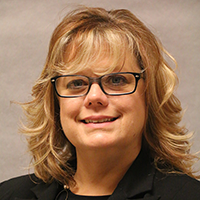
Theresa Adamec
Lancaster High School
Lancaster, NY
Grades: 9–12
Students: 1,949
Region: Suburban
There’s nothing like working with others to achieve a common goal. At a young age, I realized that I do best when working with others. I’ve found this to be true at school when engaging in cooperative assignments, as a member of sports teams, and in the world of employment. The challenge of blending personalities and finding compromises to make decisions or create programming that benefit a community is very rewarding. As a leader, collaboration is key to
the role I play. It permits all a voice and allows stakeholders to weigh in and create outcomes that all can be proud of. Collaboration builds cooperation and trust, making for a positive environment, which in turn fosters success.
North Carolina
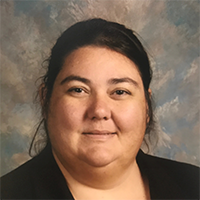
Meghan LeFevers
Bessemer City High School
Bessemer City, NC
Grades: 9–12
Students: 651
Region: Rural
As an educator, I never knew how much inclusion would teach me. Selfishly, I thought I would be the one teaching. I learned quickly that I was wrong. Through my work with one student on the autism spectrum and many other students who were labeled at-risk, I found my “why.” I learned that expectations should be high for all students. Without high expectations, our school would not graduate 82 percent of students with disabilities, 20 percent higher than the state average. Due to my previous understanding, interventions, and practical learning, I am able to work with students who have been through a myriad of situations and who, despite their difficulties, thrive even after they get their diploma.
North Dakota
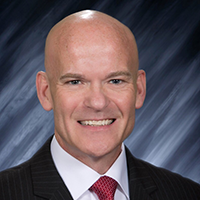
Kelly Peters
Red River High School
Grand Forks, ND
Grades: 9–12
Students: 1,060
Region: Rural
At Red River High School, our mission is to educate everyone in a safe and respectful environment. To accomplish this mission, we work as a collaborative team where each member owns their success and together we address any areas of need. We collaborate not just as a team, but as a family that cares about one another and fosters growth and understanding in each other. When one of our family members is hurting, we support, encourage, and help one another.
When one of us is successful, we remember that we cannot do this alone. If I am successful, it is because we are successful.
Ohio
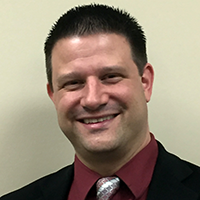
Ned Lauver
Westlake High School
Westlake, OH
Grades: 9–12
Students: 1,139
Region: Suburban
When I arrived at Westlake, it was already a strong school with a strong academic focus, but I felt that our four- and five-year graduation rate did not reflect our goal of educating for excellence. I worked with my incredible colleagues to further personalize our approach with at-risk students. We talked about students’ stories and worked to meet their individual needs, from modified schedules to formal and informal social-emotional support networks. Even as we completed the process of becoming an IB world school, we also built blocks of time into the schedule for reading and math intervention and credit recovery, and we began to construct a formal Positive Behavioral Interventions and Supports program. Our graduation rate has increased more than 3 percent.
Oklahoma
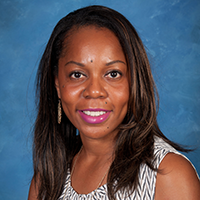
Stephanie Williams
Norman North High School
Norman, OK
Grades: 9–12
Students: 2,400
Region: Suburban
My goal is to ensure every student has an opportunity to succeed, regardless of race or socioeconomic background. Over the years, I have implemented teacher-driven interventions through common plans, a freshman leadership team creating common expectations for students, a “Kid Talk” tool to focus on meaningful conversations about students and a restorative committee to shift school climate. Additionally, I have stepped outside of my building to collaborate with my district to address these concerns. I served on the Climate and Culture task force where we focused on creating an inclusive environment for all of our students. Collaboration is where the magic happens. Coming together frequently to learn about students fosters the growth of unique ideas.
Oregon
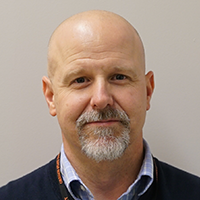
Rich Engel
West Albany High School
Albany, OR
Grades: 9–12
Students: 1,334
Region: Rural
I believe our greatest success has been improving and maintaining our high graduation rate over the past several years. During the past four years, we have graduated 97.9 percent of our students. We believe that this is possible because of the great relationships we as a staff are able to develop and nurture with our students and families. We take the time to meet individually on a weekly basis with these groups to ensure that they are on track and to assist with eliminating any
potential barriers for academic success. In addition, we have created new interventions to assist our students in meeting all of the essential skills necessary for graduation. It has been a collaborative effort to ensure that we uphold our vision of graduating culturally responsible students empowered to achieve college and career success.
Pennsylvania
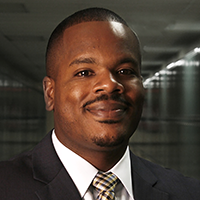
Kristopher Brown
Strath Haven High School
Wallingford, PA
Grades: 9–12
Students: 1,161
Region: Suburban
I have successfully implemented a professional growth plan for teachers using student feedback for the purpose of professional development. This allows teachers to gather real feedback on the effectiveness of their instruction from their students and, with this, make adjustments to their instruction to benefit all students. Not only do students feel more connected with the process, but teachers also gain firsthand information on the effectiveness of their instruction from their target audience. When teachers use this process for the purpose of their own personal and professional development, the benefits include a more student-centered learning experience, more effective instruction, authentic and meaningful professional learning, and increased social capital through professional conversations.
Rhode Island
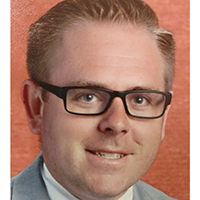
John Fontaine
Cranston High School West
Cranston, RI
Grades: 9–12
Students: 1,414
Region: Suburban
As a new assistant principal at my school, I quickly noticed a need to help monitor our math interventions similar to the supports provided with reading. This need required an expansion of our Response to Intervention team to help our assessment system as it relates to providing meaningful supports to those students. I led a charge and started a STAR Math RTI team. This team consisted of math teachers who met weekly to review the data and increase communication between math intervention teachers and math classroom teachers. Three years later, we have a group of math interventionists who work with students to “exit” their interventions fluidly, even if it happens midyear, against all “traditional” scheduling norms.
South Carolina
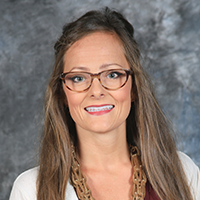
Erica Page
Pelion High School
Pelion, SC
Grades: 9–12
Students: 678
Region: Rural
I love leading at a school that prepares tomorrow’s leaders by creating a culture of collaboration, distributed accountability, and increasing expectations and opportunities for our students. My goal is to personalize the high school experience for all students, from at-risk to AP, by providing equitable learning opportunities that lead each graduate to college acceptance and career readiness. By working with higher educational institutions and bringing college to our campus through dual-enrollment courses, we have narrowed the opportunity gap for students who would not have attended college. By sharing leadership responsibilities, I foster growth, unity, and commitment to our mission. This ownership of our shared goals creates a dynamic collaboration that ensures student success.
South Dakota
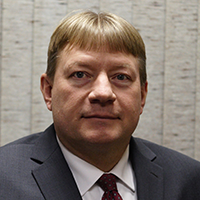
Brad McDonald
Tri-Valley
Colton, SD
Grades: 5–8
Students: 301
Region: Rural
Upon being hired as assistant principal, I was presented with the challenge of addressing assessment scores. Through collaborative discussions with staff members, it was determined that additional feedback was required to address the individual needs of each student. We decided that Renaissance STAR could provide valuable feedback. The STAR program could also provide staff with individualized lessons targeting student deficiencies in specific skill areas. Specifically, staff members were provided with the resources to aid in instructional planning and creating a learning progression for individualized instruction. The teachers were provided professional development time to work in grade-level teams. I assisted each grade-level team in learning how to best utilize the program to meet the needs of each student. The collaboration among staff, coupled with the willingness to implement individualized instruction through the use of STAR and other instructional resources, has led to an increase in student achievement.
Tennessee
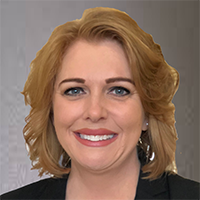
Traci Sparkman
Walter J. Baird Middle School
Lebanon, TN
Grades: 6–8
Students: 546
Region: Suburban
In 2014–15, our school was ranked as a level 1 school indicating our students’ standardized test scores ranked among the lowest in our state. Our administrative team visited a high-performing middle school nearby and worked closely with the principal from that school. We were able to collaboratively create a new vision for our school that included new scheduling to reduce student-teacher ratios during RTI while utilizing multiple data points to place them individually to maximize student learning. Two years later, after implementing our new plan, we became a level 5 school which means we were among the top quintile for student growth in our state. The following year we scored even higher and were in the top 5 percent for student growth in the state of Tennessee. Teachers and administrative staff attribute our success largely in part to the
plan we created.
Texas
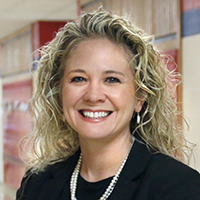
Becky Odajima
Midway High School
Waco, TX
Grades: 9–12
Students: 2,450
Region: Suburban
At Midway High School, we have embraced the opportunity to work in collaborative teams to enhance student learning and achievement. Our core teachers meet daily in professional learning community (PLC) teams to focus on the specific needs of students. On Mondays, teachers meet to disaggregate data from formative and summative assessments to determine student needs for intervention. Tuesdays are devoted to pedagogy and content-focused technology integration to better facilitate learning in our 1:1 school environment. On Wednesdays and Thursdays, our teachers collaborate, align, and plan content-essential standards as well as create enrichment and intervention activities for students. And each Friday, our teachers guide their own conten-focused professional development. The purpose for each PLC team is to determine, through data, the need of every student and then find the best way to improve student learning and achievement through curriculum, instructional practice, and the purposeful use of technology in the classroom.
Utah
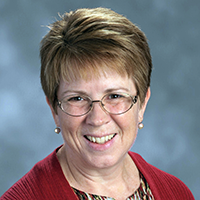
Sandra LeCheminant
Albion Middle School
Sandy, UT
Grades: 6–8
Students: 929
Region: Suburban
One of the most satisfying tasks as a school leader is to support teachers in creating meaningful learning experiences for students. This year, one of our teachers, while not new to the profession, was eager to learn new ways to deliver her curriculum. We worked together with our instructional coach to introduce grouping structures, effective feedback, increased rigor through analyzing and using depth-of-knowledge activities, and real-world application of content for
students. She is enthusiastic about her growth as a teacher and her students are increasingly successful in the content area. The teamwork we have created with teachers, administrators, and an instructional coach has been an effective model in improving learning for students and teachers in our school. I am proud to be a part of building enthusiasm for exciting teaching and building active professional learning communities to create a dynamic learning atmosphere for
students within our school.
Vermont

Jay Hartman
Missisquoi Valley Union Middle/High School
Swanton, VT
Grades: 7–12
Students: 806
Region: Rural
Missisquoi Valley Union Middle/High School (MVU) is not where I work. Rather, I consider it my home. Any recognition that I have received is because of the opportunity, support, patience, and trust that I have been given by the school community. My goal is to work with students and adults to create opportunities to increase the positive experiences at our school. Despite challenges, MVU continues to work enthusiastically to provide every student with the best education possible. Our teachers, support staff, and my administrative colleagues are dedicated, creative, and tireless in their efforts to make our school better. I work every day to work hard, be nice, stay positive, be fair and consistent, and help everyone I meet have the best day possible. My proudest moments occur every year at graduation when a struggling student I have worked with comes across the stage to receive his or her diploma.
Washington
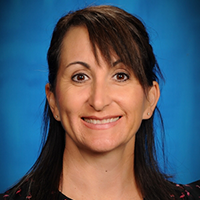
Tami Skillingstad
Westwood Middle School
Spokane, WA
Grades: 6–8
Students: 580
Region: Suburban
Every year at Westwood Middle School, I lead our eight Associated Student Body (ASB) executive officers in data-driven goal setting. The students analyze consecutive years of school data including state assessment scores, climate surveys, discipline, and attendance. As a group, we focus on a goal aligned with the Association of Washington School Principals Leadership Framework within the area of “Creating a Culture.” The students choose the goal and create actionable steps for the ASB council. Through this model and effective student leadership, our school has implemented a student-run snack shack, which is one of our most popular PBIS reinforcements; seen an increase in student participation in extracurricular activities from 68 percent to 92 percent in four years; and established in-school volunteer opportunities, such as our Café Clean-Up Crew and peer tutoring in our after-school homework club. Personal success for me as a leader is exemplified when students are making the difference.
West Virginia
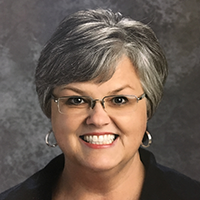
Melanie White
Sissonville High School
Charleston, WV
Grades: 9–12
Students: 612
Region: Rural
After listening to our students talk about their future vision, we knew we needed to personalize our curriculum at Sissonville High School to meet our students’ needs. Together with the West Virginia Department of Education, our leadership team and faculty, we have created a Career and Technical Education Department that allows us to be a comprehensive high school. Expanding our electives, we have included workplace practicums to offer students a simulated workplace experience—all while still in high school. Students run their own businesses and refine their skills while learning key industry standards. Students in these programs not only display more confidence, leadership skills, and ownership of their education, but they encourage others to do the same.
Wisconsin
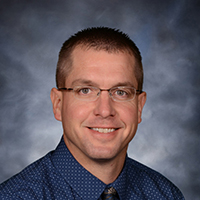
Justin Szews
Lakeland Union High School
Minocqua, WI
Grades: 9–12
Students: 710
Region: Rural
In 2012, Lakeland Union High School’s (LUHS) student absenteeism rate was 23.2 percent. This rate was nearly double the state goal for student absenteeism. In an effort to address the issue, the district’s administration and school board appointed me to lead the development and implementation of a plan to improve attendance and decrease the absenteeism rate at LUHS. This plan involved an analysis of our locality’s court system. Our students reside in three separate court jurisdictions. Truancy court and the commensurate attendance interventions looked very different in all three courts. In an effort to achieve consistency for all students, we developed a Truancy Task Force. This team was, and still is, comprised of school personnel, social workers, law enforcement, county attorneys, and judges representing all three jurisdictions that our students reside in. Due largely to the collaborative efforts of the Truancy Task Force, Lakeland Union High School’s absenteeism rate has dropped to 6.98 percent.
